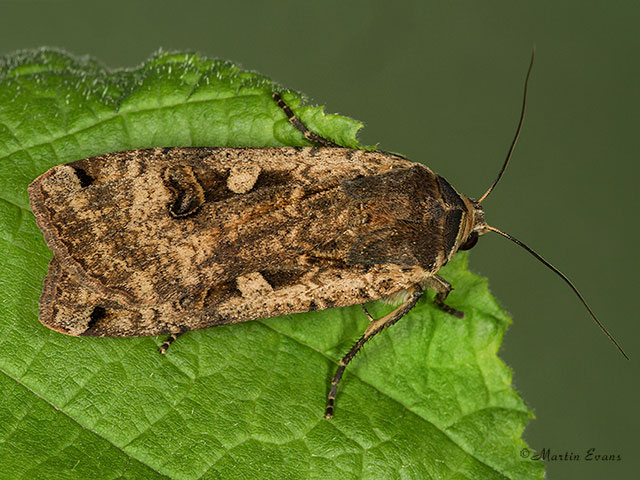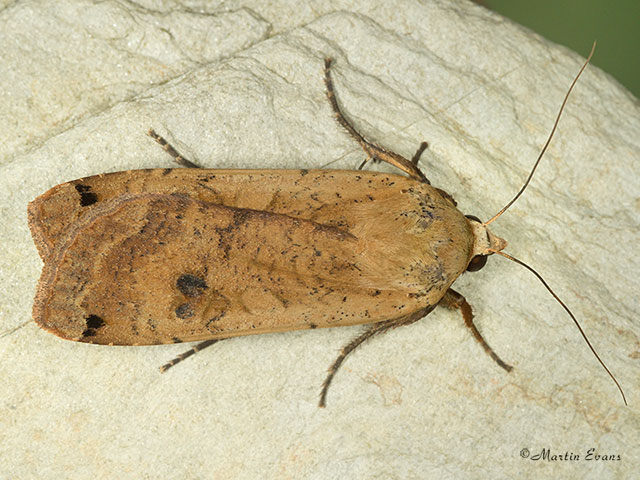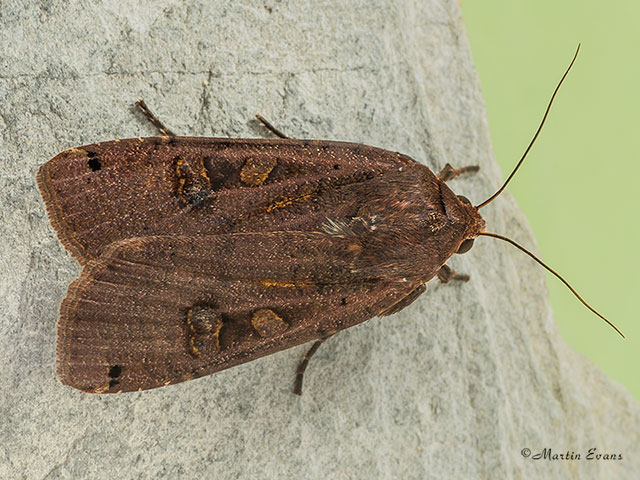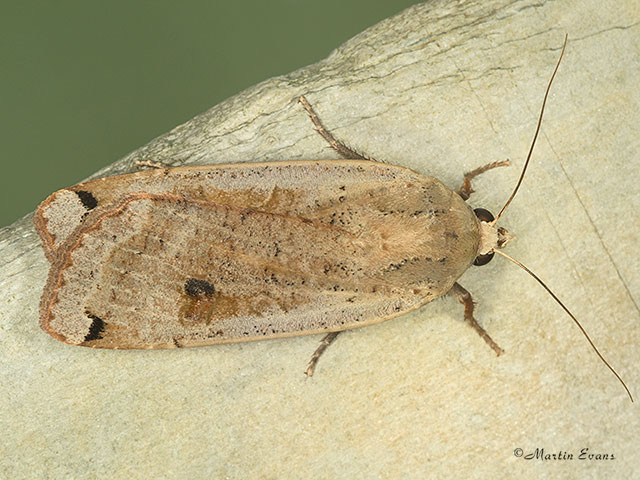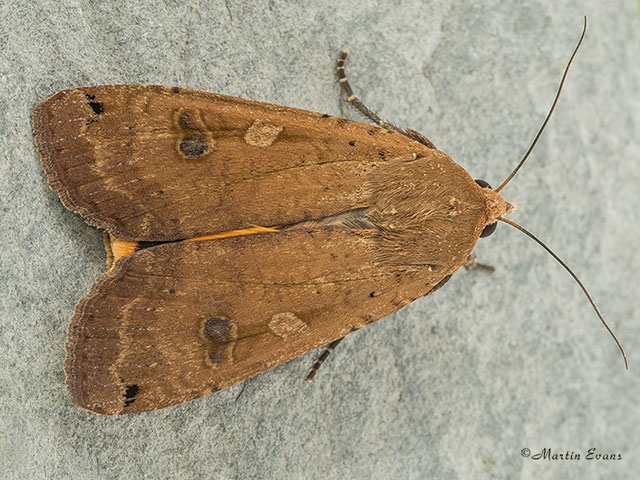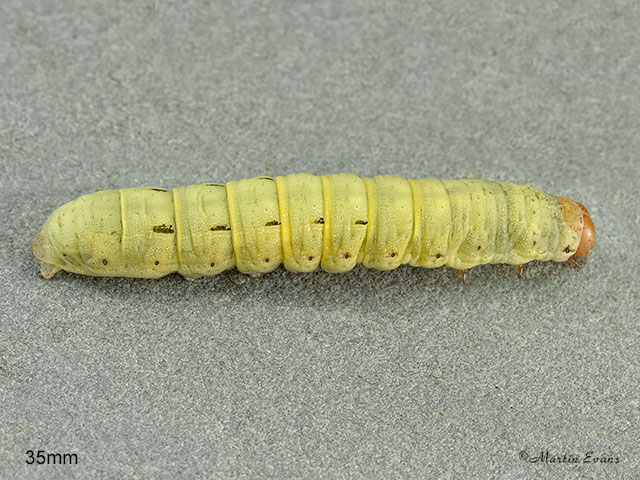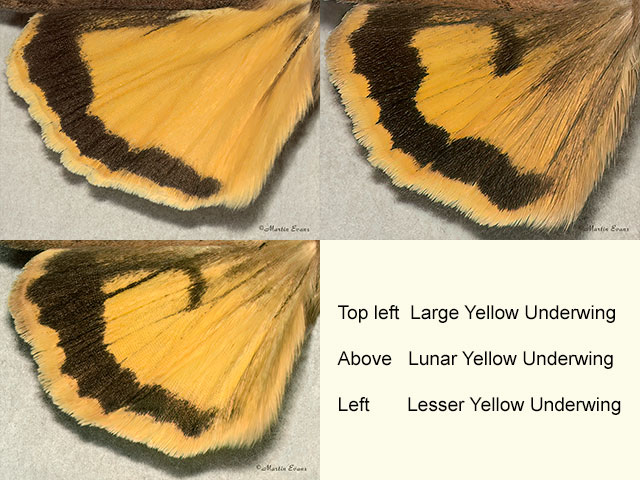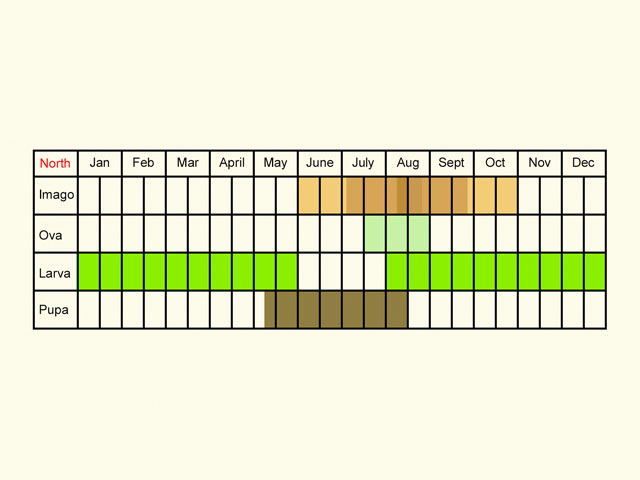Noctuidae
73.342 Large Yellow Underwing Noctua pronuba (Linnaeus 1758)
Common
Similar species: Lesser Yellow Underwing Noctua comes is smaller (16 to 21mm) and lacks the black dash on the leading edge near the wing tip. Lunar Yellow Underwing Noctua orbona is also smaller (17 to 20mm) and has a broader forewing, but does have the black dash on the leading edge near the wing tip.
Forewing: 21 to 26mm
Habitats: Perhaps most common on open grassland, but it is found in most habitats from mountain moorland to gardens.
Habits: The moth nectars at the flowers of Bramble, ragworts, Heather and many other species. It is often disturbed from dead leaves and low plants during the day when it flies off rapidly. It is attracted to sugar and light.
Foodplant: The polyphagous larva feeds nocturnally on docks, Foxglove, Dandelion, hawk-weeds, Meadow Vetchling, plantains, violets, Annual Meadow-grass, strawberries, cultivated brassicas, Carrot, carnations, marigolds and many other herbaceous plants and grasses. It hides in the soil during the day. Pupation takes place under the soil.
